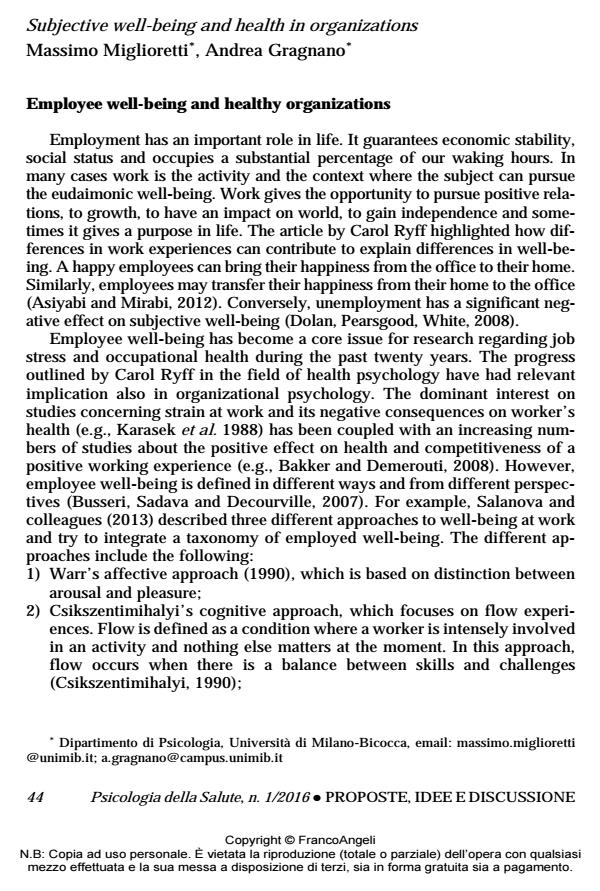Subjective well-being and health in organizations
Journal title PSICOLOGIA DELLA SALUTE
Author/s Massimo Miglioretti, Andrea Gragnano
Publishing Year 2016 Issue 2016/1
Language English Pages 5 P. 44-48 File size 37 KB
DOI 10.3280/PDS2016-001006
DOI is like a bar code for intellectual property: to have more infomation
click here
Below, you can see the article first page
If you want to buy this article in PDF format, you can do it, following the instructions to buy download credits

FrancoAngeli is member of Publishers International Linking Association, Inc (PILA), a not-for-profit association which run the CrossRef service enabling links to and from online scholarly content.
- Cognitive and affective-motivational states as mediators of the association between presenteeism and job satisfaction José-María Figueredo, Cristina García-Ael, Andrea Gragnano, Gabriela Topa, in European Review of Applied Psychology 100865/2023 pp.100865
DOI: 10.1016/j.erap.2022.100865 - Work–Life Balance: Weighing the Importance of Work–Family and Work–Health Balance Andrea Gragnano, Silvia Simbula, Massimo Miglioretti, in International Journal of Environmental Research and Public Health /2020 pp.907
DOI: 10.3390/ijerph17030907 - Predictors of Burnout and Well-Being Among Veterinarians in Slovenia Ožbalt Podpečan, Valentina Hlebec, Metka Kuhar, Valentina Kubale, Breda Jakovac Strajn, in Veterinary Sciences /2025 pp.387
DOI: 10.3390/vetsci12040387
Massimo Miglioretti, Andrea Gragnano, Subjective well-being and health in organizations in "PSICOLOGIA DELLA SALUTE" 1/2016, pp 44-48, DOI: 10.3280/PDS2016-001006